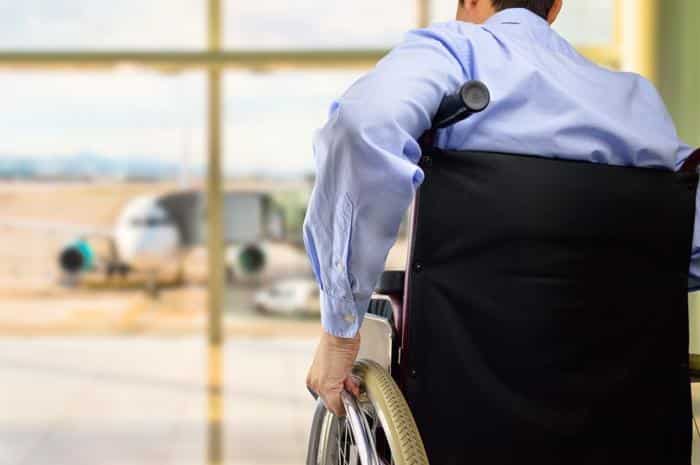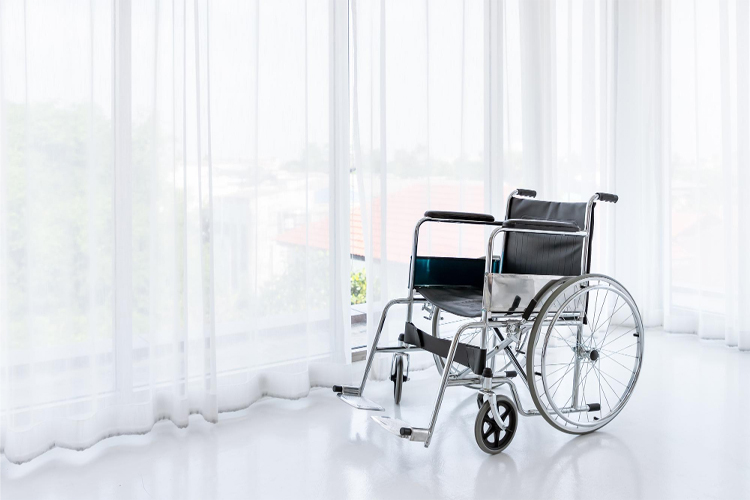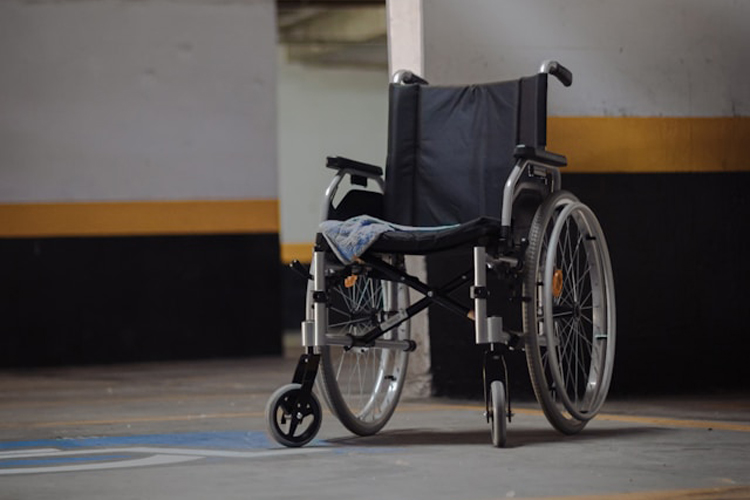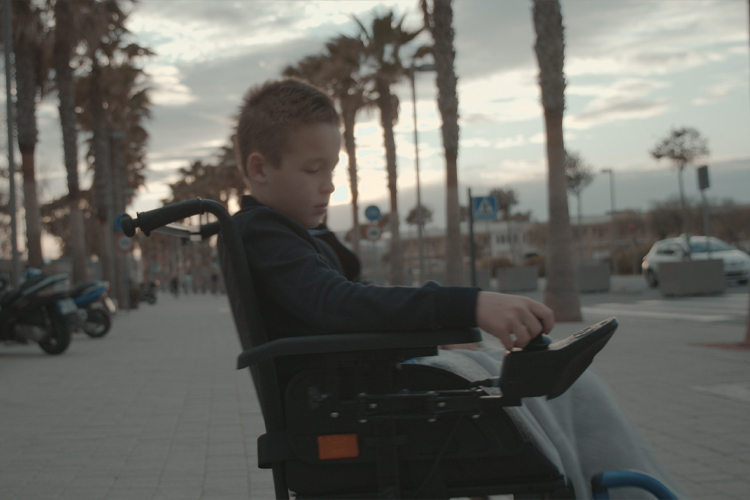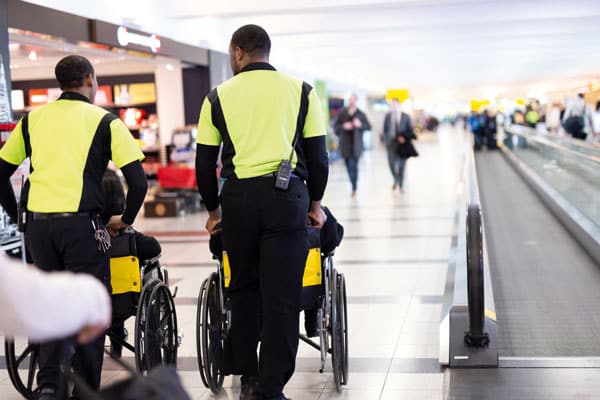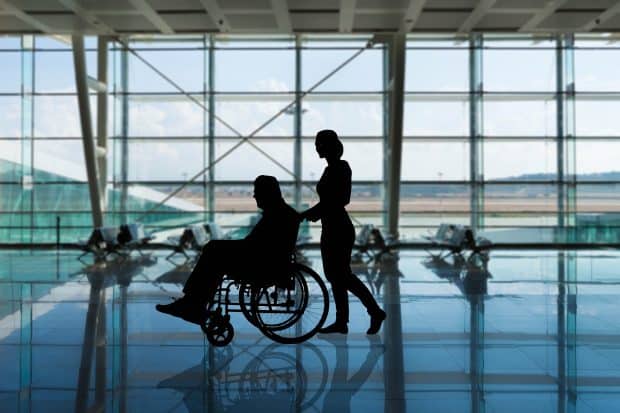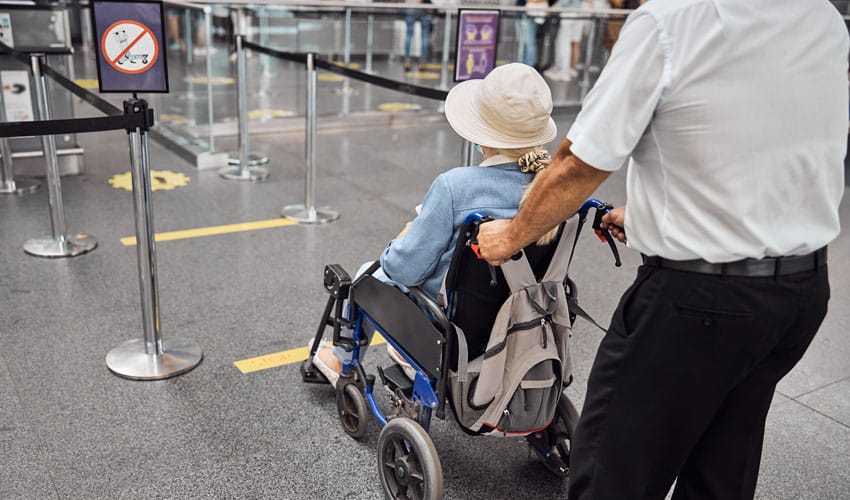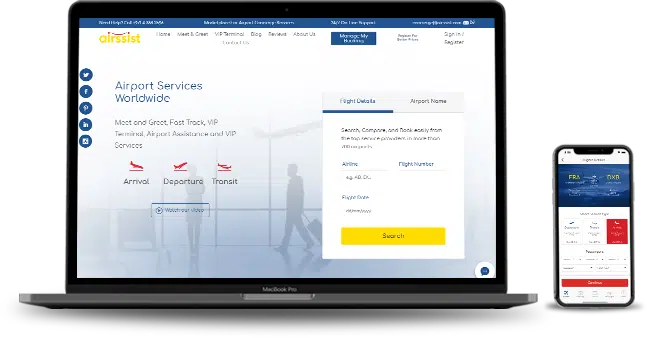Table of Contents
People with different types of disabilities face many difficulties in getting from place to place, so could you imagine how much more difficult it is to travel to another country? It could be a total struggle. However, providing airport assistance for disabled helps people with certain disabilities like mobility impairment, visual issues, or passengers who have difficulty in hearing and speaking and assists them with airport procedures.
Overcoming Challenges Faced by Disabled Travelers
Disabled travelers face several challenges when it comes to traveling. Here are some common challenges they may encounter:
Ensuring Accessibility: A Guide for Disabled Travelers
One of the most significant challenges for disabled travelers is the lack of accessibility in many destinations. Buildings, public transportation, tourist attractions, and accommodations may not be designed with the needs of disabled individuals in mind. This can make it difficult for travelers with mobility impairments to navigate and enjoy their trip.
Exploring Accessible Transportation for Disabled Travelers
Accessible transportation options can be limited, especially in certain regions or countries. Public transportation systems may not be wheelchair-friendly, and private transportation services may not have the necessary accommodations for disabled travelers. This can make it challenging to move around and explore a destination.
Discovering Suitable Accommodations for Disabled Travelers
Finding suitable accommodations that cater to the needs of disabled travelers can be a challenge. Many hotels and guesthouses may not have accessible rooms or facilities, such as ramps, elevators, or grab bars in bathrooms. Accessible rooms might also be limited in availability and tend to get booked quickly.
Breaking Attitudinal Barriers for Disabled Travelers
Disabled travelers may encounter attitudinal barriers, including prejudice, stereotypes, and ignorance from others. This can lead to discrimination, lack of understanding, or inadequate assistance from service providers and fellow travelers.
Essential Information for Disabled Travelers
Disabled travelers often face a lack of accurate and comprehensive information about accessibility at their desired destinations. This includes details about accessible attractions, transportation options, facilities, and services. Without this information, planning a trip becomes more challenging.
Medical and Accessibility Equipment for Disabled Travelers
Traveling with medical equipment or assistive devices can be complicated. There may be restrictions on what can be brought on airplanes or limitations in obtaining necessary medical supplies or equipment at the destination.
Breaking Language and Communication Barriers for Disabled Travelers
Communication barriers can arise when disabled travelers visit destinations where they do not speak the language or sign language is not widely understood. This can make it difficult to seek assistance or convey specific needs.
Safety and Security Measures for Disabled Travelers
Disabled travelers may have concerns about safety and security, particularly when traveling alone or in unfamiliar environments. Accessible emergency exits, evacuation procedures, and general safety measures may not be adequately addressed.
Accessible Activities and Attractions for Disabled Travelers
Some activities and attractions may not be accessible or may have limited accessibility options for disabled travelers. This can restrict their ability to fully participate in certain experiences or enjoy popular tourist sites.
In short, it is important to note that while these challenges exist, many destinations and organizations are working towards improving accessibility and inclusivity for disabled travelers. Laws and regulations are being implemented to address these issues, and there are resources available that can assist disabled individuals in planning their trips.
Guide to Wheelchair Types, Assistance Levels, and Additional Services
When it comes to service descriptions for wheelchair-related services, there are various types of wheelchairs available, different levels of assistance provided, and additional services that can be offered. Let’s delve into each aspect in more detail:
Discovering Wheelchair Options for Disabled Travelers
a. Standard Manual Wheelchairs: These are basic, manually operated wheelchairs that are suitable for passengers who have sufficient upper body strength and mobility to self-propel.
b. Transport Wheelchairs: Also known as companion wheelchairs, these are lightweight and compact wheelchairs designed for easy transport of passengers who are unable to self-propel. They are typically pushed by airport staff or companions.
c. Electric Wheelchairs: Electric wheelchairs, or power wheelchairs, are motorized wheelchairs controlled by the passenger using a joystick or other input devices. They offer greater independence and mobility for passengers with limited upper body strength or mobility.
Choosing the Right Assistance Levels for Disabled Travelers
a. Independent Mobility: Passengers who can navigate the airport and board the aircraft independently may require minimal assistance. They may only need assistance with checking in the wheelchair and retrieving it at the destination.
b. Attendant Assistance: Some passengers may require assistance with maneuvering the wheelchair throughout the airport, including check-in, security checkpoints, and boarding. Airport staff or trained attendants can provide the necessary support.
c. Full Assistance: Passengers with significant physical limitations may require comprehensive assistance throughout their journey. This can include assistance with check-in, security procedures, navigating the airport, boarding, and disembarking.
Exploring Additional Services for Disabled Travelers
a. Medical Assistance: Airport wheelchair services may offer medical assistance for passengers who require it. This can include the presence of medical professionals or aides who can provide basic medical support or attend to specific medical needs.
It’s important to note that the availability of specific types of wheelchairs, assistance levels, and additional services can vary among airports. It’s advisable to contact the airport or airline in advance to discuss specific needs and make necessary arrangements. Airport wheelchair services are designed to ensure a smooth and comfortable travel experience for passengers with mobility challenges or disabilities.
Best Practices: Assisting Disabled Individuals at the Airport
When dealing with a disabled person at the airport, it is important to approach the situation with empathy, respect, and a willingness to provide assistance. Here are some guidelines on how to effectively assist disabled individuals at the airport:
1. Effective Communication with Disabled Individuals at the Airport: When interacting with a disabled person, communicate clearly and respectfully. Speak directly to the person and not their companion or caregiver unless instructed otherwise. Use simple and concise language, and if necessary, ask if they require any specific communication accommodations.
2. Practicing Patience and Understanding with Disabled Travelers: Recognize that individuals with disabilities may require additional time and assistance. Be patient and understanding throughout the process. Allow them to move at their own pace and offer support when needed.
3. Ensuring Accessibility at the Airport for Disabled Individuals: Ensure that the airport facilities and services are accessible to disabled individuals. This includes providing ramps, elevators, accessible restrooms, designated parking spaces, and appropriate signage. Make sure that information is available in accessible formats, such as braille or large print.
4. Providing Adequate Mobility Assistance for Disabled Travelers: Offer assistance with mobility if it is needed and requested. This may involve providing a wheelchair or mobility aid, guiding the person through the airport, or arranging for an airport escort or wheelchair assistance service.
5. Accommodating Disabled Individuals during Security Screening: Disabled individuals may require accommodations during the security screening process. Inform them about the procedures in advance and provide options for private screenings if necessary. Treat any medical equipment or assistive devices with care and respect.
6. Offering Priority Boarding and Seating for Disabled Travelers: Offer priority boarding to disabled individuals, as well as their companions or caregivers, if applicable. Ensure that they have access to priority seating or designated seating areas that are more comfortable and suitable for their needs.
7. Assistance with Luggage: Offer assistance with carrying or transporting luggage if needed. Be mindful of any specific instructions regarding the handling of medical equipment or fragile items.
8. Information and Directions: Provide clear and accurate information regarding gates, flight status, boarding procedures, and any other relevant details. Offer assistance in navigating the airport, including directions to amenities, services, or accessible facilities.
9. Sensitivity to Sensory Needs: Recognize that some disabled individuals may have sensory sensitivities or conditions such as autism. Be mindful of loud announcements, bright lights, or crowded areas that may cause distress. Offer quieter and more secluded areas if necessary.
10. Respect for Privacy and Dignity: Respect the privacy and dignity of disabled individuals. Avoid making assumptions or asking intrusive questions about their disability. Provide assistance and support while maintaining their autonomy and independence.
Remember, every disabled person is unique, and their needs and preferences may vary. It’s essential to listen to their requests, ask for guidance if necessary, and provide personalized assistance accordingly.
Inclusive Services at Airports for Disabled Travelers
Navigating Wheelchair and Guided Assistance: Helpful Tips
- Assistance with the Main Airport Procedures
Airport assistance for disabled people includes handling all the airport procedures including check-in, security and customs checks, ticket counters, and more until the traveler is ready to board the plane or leave the airport.
- Baggage Assistance to Passengers with Disabilities
Baggage assistants is among the most important services to be offered to a disabled traveler. The assistant helps travelers in carrying their baggage to the check-in area in case of departure or claiming the baggage and carrying them to the traveler’s vehicle outside of the airport in case of arrival. Assistants also help disabled passengers with their carry-on luggage by delivering them to the airplane and out of it.
Essential Tips for Wheelchair and Guided Airport Assistance
- Book your flight tickets as soon as possible to inform the airline company about the type of assistance you need, i.e., wheelchair or guided assistance.
- Request a wheelchair from the airline company when you book if you don’t intend to bring one yourself.
- Arrive at the airport early so you can have some extra time to finish all the airport procedures without any delays.
- Book the meet and greet service of a professional airport concierge company like airssist to make your airport journey extremely fast and comfortable.
Clarifying Procedures: Priority Boarding for Disabled Travelers
Depending on the airline and the specific circumstances, the practice of allowing disabled passengers to embark first can vary. Some airlines may offer disabled passengers priority boarding, but this is not a universal policy.
In Addition, numerous airlines have established procedures to facilitate the entry of disabled passengers. This may involve giving priority admission to passengers with mobility impairments or those who need additional time or assistance to reach their seats. However, specific guidelines and eligibility requirements can vary by airline.
Optimal Booking Timing for Airport Assistance Services
Each airline can independently determine how early disable travelers should request their airport assistance. Some airlines request to be informed about airport assistance for disabled people at least 72 hours before the flight, while others accept requests 48 hours before the flight. In case you are too late to request airport assistance, you can book with airssist to receive airport assistance for disabled people on short notice.
If you have a disabled person in the family who has to travel alone soon, inform the airline to do the needful and book airssist meet and greet, airport lounge access, VIP terminal or airport transportation services in addition to what the airline will provide, to have peace of mind about the traveler’s comfort and make sure you are covering all that the traveler needs for a stress-free travel.
Guide to Qualifications and Regulations for Airport Wheelchair Services
Service providers at airports who offer disability assistance, including wheelchair services, typically employ trained staff who are knowledgeable about the specific needs and challenges faced by individuals with disabilities. Some of these employees may have to go through special training to make sure they can help and support disabled customers and even VIP airport assistance in volatile areas.
In terms of regulations governing disability assistance at airports, there are several important guidelines and laws in place to protect the rights and ensure the safety of individuals with disabilities. Some of the key regulations include:
Ensuring Compliance with the Air Carrier Access Act (ACAA) for Disabled Travelers
This U.S. federal law prohibits discrimination against individuals with disabilities in air travel. It requires airlines to provide assistance and accommodations to passengers with disabilities, including wheelchair services and other necessary support during their journey.
Understanding European Union Regulations for Disabled Travelers
In the European Union, Regulation (EC) No 1107/2006 establishes the rights of disabled persons and persons with reduced mobility when traveling by air. It mandates that airports and airlines must provide assistance to these individuals, including wheelchair services, free of charge.
Compliance with ICAO Guidelines for Disabled Travelers
The ICAO provides guidelines on the facilitation of passengers with disabilities to ensure uniformity and best practices across different countries. These guidelines cover various aspects of disability assistance, including wheelchair services, training for staff, and proper handling of mobility aids.
Ensuring Compliance with Airport Accessibility Regulations for Disabled Travelers
Many countries have specific regulations or guidelines that airports must adhere to regarding accessibility for individuals with disabilities. These regulations may cover areas such as wheelchair accessibility, signage, accessible restrooms, and designated assistance points.
In short, it’s important for airport service providers to comply with these regulations and guidelines to ensure that individuals with disabilities receive the necessary assistance and support during their travel experience. Compliance helps to create an inclusive and accessible environment for all passengers, regardless of their mobility challenges or disabilities.
Trusted Sources for Airport Assistance Information for Disabled Travelers
Navigating airports with a disability can be daunting, but reliable information is your key to a smooth journey.
Government Guidelines: Stay informed about your rights and airport responsibilities with links to official resources like the Department of Transportation’s Air Carrier Access Act and the Federal Aviation Administration’s Passengers with Disabilities
Disability Advocacy Groups: Connect with communities like the National Center for Independent Living (NCIL) and the American Association of People with Disabilities (AAPD) for valuable insights and support.
By utilizing these trusted resources, you can make informed decisions and advocate for your needs, ensuring a more confident and stress-free travel experience.
Note: Please note that the information on this page is generic & subject to change due to fluctuations in airport services. Kindly confirm service availability with our team, as offerings may vary daily.
 French | Français
French | Français Spanish | Espana
Spanish | Espana German | Deutch
German | Deutch Arabic | العربية
Arabic | العربية Chinese | 中文(简体)
Chinese | 中文(简体)  Japanese | 日本語
Japanese | 日本語 



